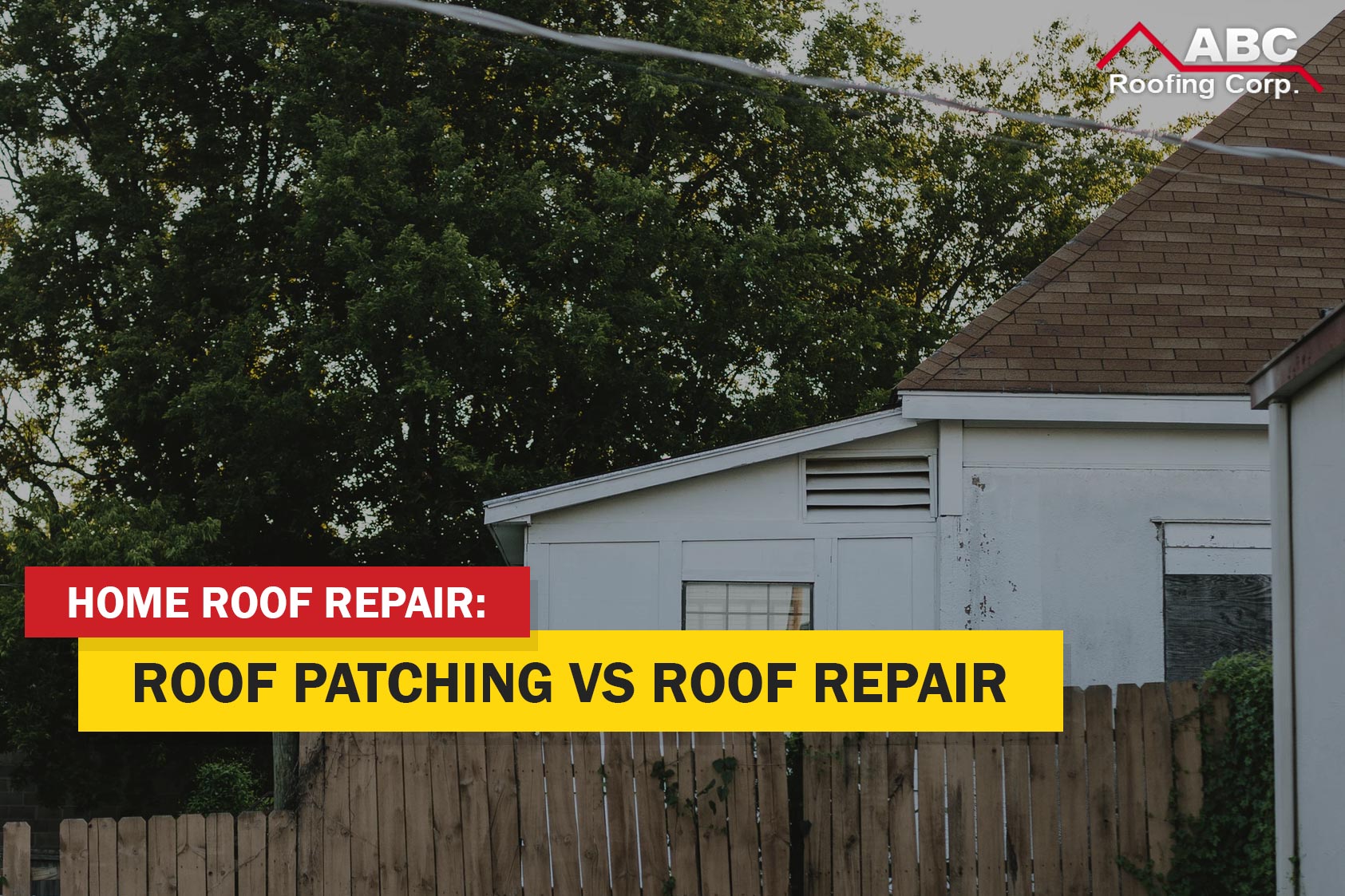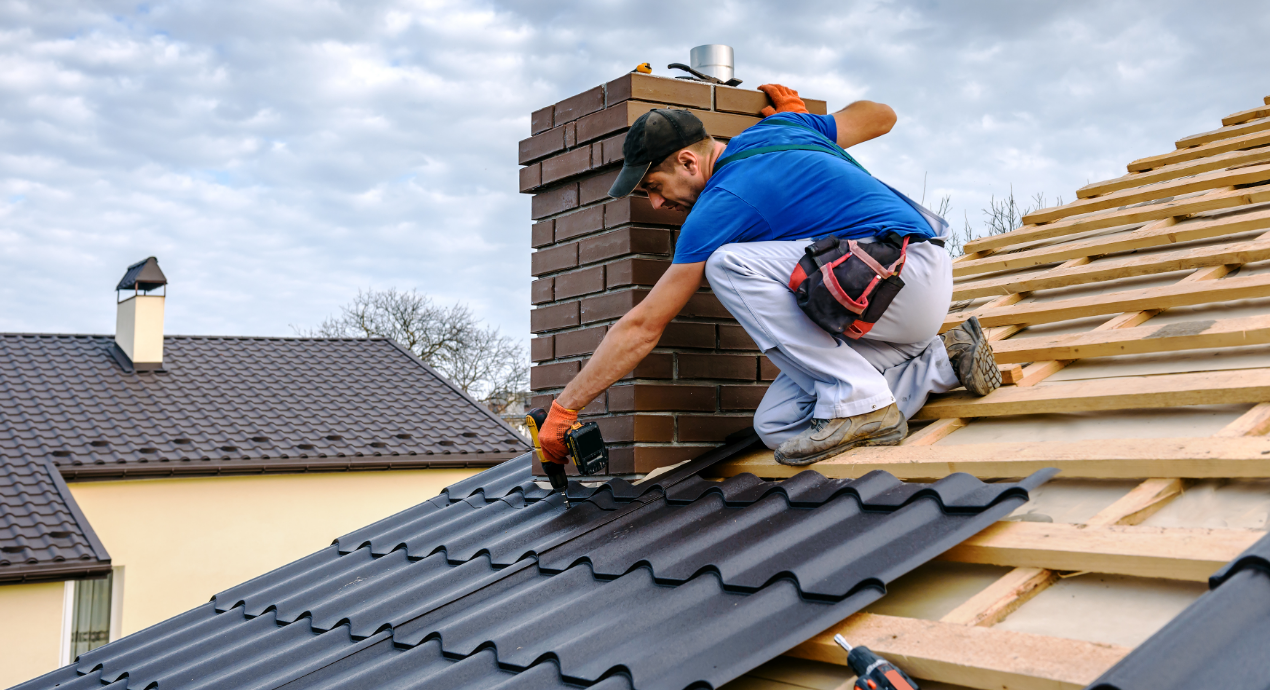Comprehending the Various Kinds Of Roofing Systems: A Comprehensive Overview for Homeowners
With a variety of choices-- varying from the typical gable to the contemporary flat-- each kind provides unique benefits and difficulties that should straighten with the house owner's particular demands and ecological considerations. As we explore the details of different roof types, it becomes noticeable that one size does not fit all; the appropriate selection may surprise you.
Gable Roof Coverings
Saddleback roofs, defined by their triangular form, are among one of the most prominent roofing designs due to their simplicity and efficiency in shedding water and snow. This style includes two sloping sides that satisfy at a ridge, enabling effective water drainage and reducing the danger of water accumulation. The steep pitch frequently associated with saddleback roofs improves their capacity to handle heavy rainfall, making them ideal for various climates.
In enhancement to their practical benefits, saddleback roofs supply aesthetic flexibility. They can be adjusted to numerous architectural styles, from conventional to modern-day homes. The layout can also fit added features such as dormer windows, which improve all-natural light and air flow in the attic space.
In addition, saddleback roofs give sufficient area for insulation, adding to energy effectiveness. Homeowners can select from a range of roof covering products, including asphalt shingles, metal, and tiles, additionally boosting customization options.
In spite of their benefits, gable roof coverings might require extra support in areas susceptible to high winds or hefty snowfall. Overall, the saddleback roof stays a preferred option because of its blend of performance, longevity, and aesthetic appeal.
Flat Roofs
Level roofings are commonly recognized for their minimalist design and sensible applications, particularly in commercial and industrial settings (oahu roofing). These roofings feature a horizontal or virtually straight surface, which enables very easy building and construction and flexible space utilization. While they might lack the aesthetic allure of pitched roofings, flat roofs supply many advantages, specifically in metropolitan environments where optimizing area is crucial
Among the main advantages of flat roofs is their access. House owners can utilize the roofing space for numerous purposes, such as roof gardens, balconies, or solar panel setups. Additionally, level roofing systems are typically a lot more economical to maintain and set up contrasted to their sloped counterparts, as they call for fewer materials and labor.
Typical materials utilized for flat roofing systems include built-up roofing (BUR), modified bitumen, and single-ply membranes, each offering distinctive advantages. On the whole, level roof coverings offer as a useful and versatile option for lots of house owners and services alike.
Hip Roofings
Hip roofings are defined by their sloped sides that converge at the top, creating a ridge. This layout stands out from gable roofings, as all four sides of a hip roofing system slope downwards towards the wall surfaces, supplying a more stable framework. The angle of the inclines can vary, enabling convenience in building appearances and capability.
One of the primary benefits of hip roofings is their ability to withstand hefty winds and read this article negative climate condition. The sloped surfaces enable far better water drainage, reducing the threat of leaks and water damages. Furthermore, hip roofs supply enhanced attic room, which can be utilized for storage or even converted into comfortable areas.
However, creating a hip roofing can be much more costly and complicated than simpler roofing types, such as gable roof coverings. The extra product and labor involved in developing the slopes and making certain proper architectural integrity can cause higher costs. Despite these disadvantages, many house owners favor hip roofings for their resilience, visual allure, and capacity for power performance.
Mansard Roofing Systems
Mansard roof coverings, frequently acknowledged by their unique four-sided design, function 2 inclines on each side, with the lower slope being steeper than the top. This building style, stemming from France in the 17th century, is not just aesthetically appealing however useful, as it makes best use of the usable area in the top floorings of a structure. The high reduced incline enables more headroom, making it a suitable selection for lofts or attics, which can be converted into living spaces.
Mansard roofing systems are defined by their adaptability, suiting numerous building designs, from typical to modern-day. They can be constructed with different materials, including asphalt roof shingles, slate, or steel, offering property owners with a variety of choices to match their preferences and budgets. In addition, the layout enables the assimilation of dormer home windows, improving natural light and ventilation in the upper degrees.
Nonetheless, it is vital to consider the possible downsides. Mansard roofings may require even more upkeep because of the complexity of their style, and their steep inclines can be testing for snow and rain overflow. In general, mansard roof coverings integrate beauty with practicality, making them a popular selection among property owners looking for unique architectural attributes.
Lost Roofing Systems
As homeowners increasingly look for simplicity and capability in their architectural designs, dropped roofing systems have actually arised as a popular selection. Defined by a solitary sloping airplane, a shed roof provides a minimalist visual that complements numerous home styles, from modern to rustic.
One of the main benefits of a shed roofing system is its uncomplicated construction, which commonly translates to reduce labor and product prices. This design enables for reliable water drain, decreasing the threat of leakages and water damages. Additionally, the vertical incline gives ample space for skylights, improving all-natural light within the inside.
Lost roofing systems also use flexibility in terms of use. They can be efficiently integrated into enhancements, garages, or exterior click this link structures like sheds and pavilions. Moreover, this roofing design can suit various roofing materials, including metal, asphalt shingles, and even green roofing systems, lining up with green initiatives.
However, it is important to consider local environment problems, as heavy snow tons may necessitate adjustments to the roof's angle or structure. On the whole, lost roof coverings offer a functional and visually pleasing choice for property owners wanting to optimize here are the findings performance without compromising style.
Verdict


Gable roof coverings, defined by their triangular form, are amongst the most popular roof designs due to their simpleness and effectiveness in dropping water and snow. oahu roofing. The high pitch generally associated with gable roofing systems boosts their capacity to handle heavy rainfall, making them ideal for numerous environments
While they may lack the aesthetic charm of pitched roofings, level roofs offer various benefits, particularly in urban environments where optimizing room is crucial.
